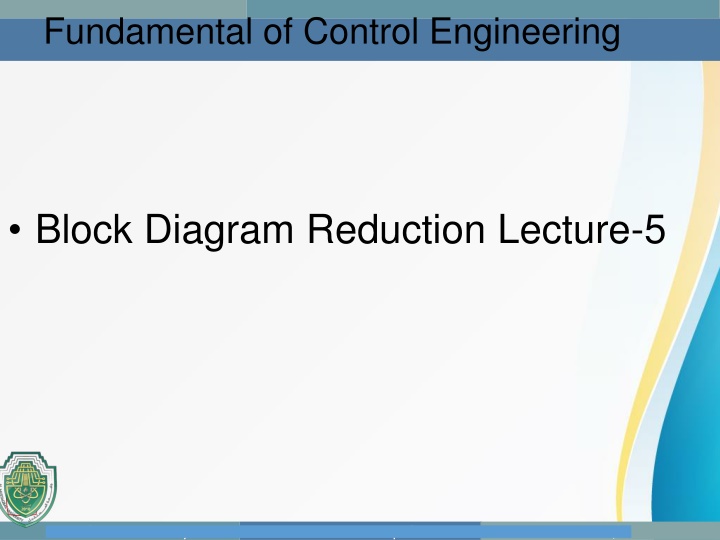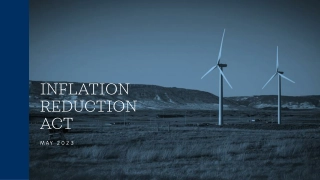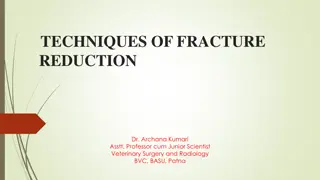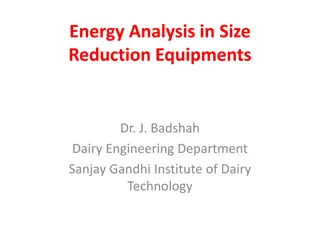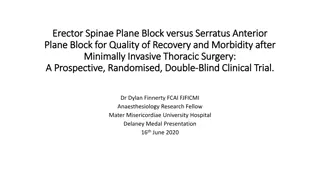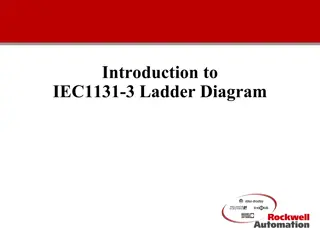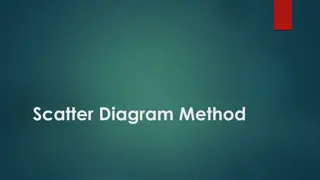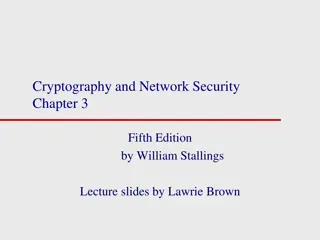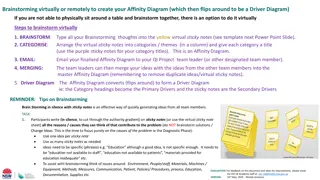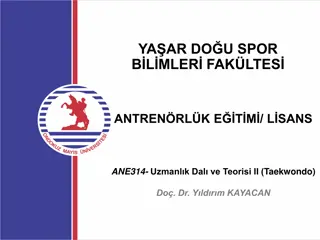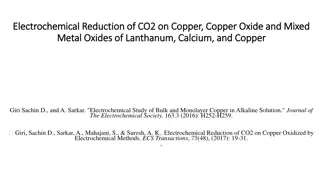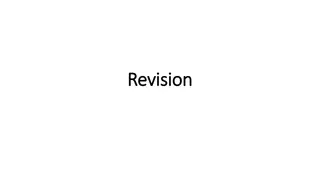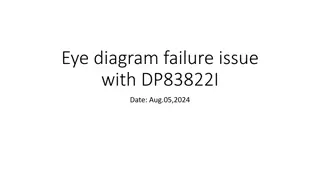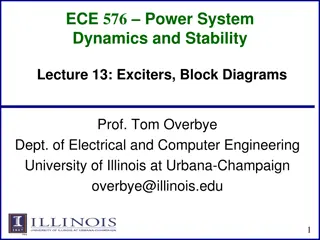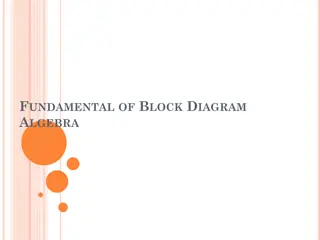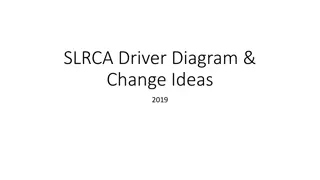• Block Diagram Reduction Lecture-5
Delve into the world of control engineering through block diagram reduction techniques. Explore dynamic responses, elementary block diagrams, and transfer functions to simplify system equations visually. Gain insights into the mathematical relationships between system components and enhance your understanding using graphical models. Follow along with Erwin Sitompul at President University for a comprehensive lecture series on this fundamental topic.
Download Presentation

Please find below an Image/Link to download the presentation.
The content on the website is provided AS IS for your information and personal use only. It may not be sold, licensed, or shared on other websites without obtaining consent from the author.If you encounter any issues during the download, it is possible that the publisher has removed the file from their server.
You are allowed to download the files provided on this website for personal or commercial use, subject to the condition that they are used lawfully. All files are the property of their respective owners.
The content on the website is provided AS IS for your information and personal use only. It may not be sold, licensed, or shared on other websites without obtaining consent from the author.
E N D
Presentation Transcript
Fundamental of Control Engineering Block Diagram Reduction Lecture-5 President University Erwin Sitompul FCS 2/1
Chapter 3 Dynamic Response The Block Diagram Block diagram is a graphical tool to visualize the model of a system and evaluate the mathematical relationships between its components, using their transfer functions. In many control systems, the system equations can be written so that their components do not interact except by having the input of one part be the output of another part. The transfer function of each components is placed in a box, and the input-output relationships between components are indicated by lines and arrows. President University Erwin Sitompul FCS 2/2
Chapter 3 Dynamic Response The Block Diagram = ( ) ( ) ( ) U s G s Y s 1 1 1 Using block diagram, the system equations can be simplified graphically, which is often easier and more informative than algebraic manipulation. President University Erwin Sitompul FCS 2/3
Chapter 3 Dynamic Response Elementary Block Diagrams Blocks in series Blocks in parallel with their outputs added ( ) ( ) Y s U s = GG 2 1 2 Pickoff point 1 Summing point ( ) ( ) Y s U s = + G G 1 2 President University Erwin Sitompul FCS 2/4
Chapter 3 Dynamic Response Elementary Block Diagrams = ( ) ( ) ( ) Y s R s Y s G G Single loop negative feedback 2 1 = ( ) ( ) ( ) Y s G R s GG Y s 1 1 2 + = ( ) 1 Y s ( ) GG GR s 1 2 1 ( ) ( ) G GG Y s R s = 1 + 1 1 2 Negative feedback with positive feedback?? ( ) ( ) G GG Y s R s What about single loop = 1 + 1 1 2 President University Erwin Sitompul FCS 2/5
Chapter 3 Dynamic Response Block Diagram Algebra President University Erwin Sitompul FCS 2/6
Chapter 3 Dynamic Response Block Diagram Algebra President University Erwin Sitompul FCS 2/7
Chapter 3 Dynamic Response Transfer Function from Block Diagram Example: Find the transfer function of the system shown below. + 2 4 s + 2 + 4 + ( ) ( ) s Y s R s 2 s s = = = ( ) T s + 2 4 2 2 4 s s + 1 2 s President University Erwin Sitompul FCS 2/8
Chapter 3 Dynamic Response Transfer Function from Block Diagram Example: Find the transfer function of the system shown below. President University Erwin Sitompul FCS 2/9
Chapter 3 Dynamic Response Transfer Function from Block Diagram G G + 1 G G G G G G G 2 ( ) ( ) G G Y s R s 1 = = + ( ) 6 T s G 1 3 5 1 1 2 4 2 1 1 3 + GG G GG GG G = 1 GG 2 5 + 1 6 1 1 3 1 2 4 President University Erwin Sitompul FCS 2/10
Chapter 3 Dynamic Response Transfer Function from Block Diagram Example: Find the response of the system Y(s) to simultaneous application of the reference input R(s) and disturbance D(s). When D(s) = 0, ? ( ) ( ) R Y s R s When R(s) = 0, ( ) ( ) D s GG GG H + = 1 2 1 1 2 Y s G G G H G GG H = = 2 2 D 1 ( + ) 1 1 2 1 2 President University Erwin Sitompul FCS 2/11
Chapter 3 Dynamic Response Transfer Function from Block Diagram = + ( ) ( ) ( ) Y s Y s Y s R D GG GG H + G GG H = + ( ) ( ) ( ) Y s R s D s 1 2 2 + 1 1 1 2 1 2 G GG H ( ) = + ( ) ( ) ( ) 2 Y s G R s D s 1 + 1 1 2 President University Erwin Sitompul FCS 2/12
President University Erwin Sitompul FCS 2/13
